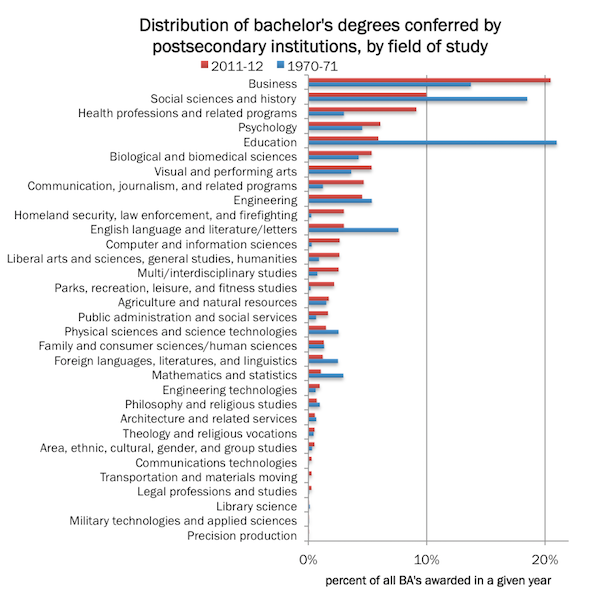MPR News Intelligence on higher education
Faculty to MnSCU chancellor: Overhaul teams have too many admins
Looks like Minnesota State Colleges and Universities (MnSCU) system faculty reps don’t agree with the first steps being taken toward implementing Charting the Future, the plan to overhaul how MnSCU operates.
Got this just now — a letter today to Chancellor Steven Rosenstone:
The Inter Faculty Organization (IFO) supports the broad contours ofCharting the Future for a Prosperous Minnesota (CTF), but we are becoming increasingly alarmed by the make-up of the CTF Implementation Teams. In light of these concerns, the IFO endorses the Minnesota State University Student Association’s (MSUSA) resolutions (see attachment) on CTF.
Students and teachers are the heart and soul of higher education: All other partners support their teaching and learning. You have proposed eight implementation teams composed of 18 members each, yet only four are students and teachers. That means 14 members are not directly involved in the classroom or online.
What is wrong with this picture?
You stated, “Implementation Teams are made up of two-thirds campuses and one-third from the System Office.” This claim does not accurately reflect the balance of power on these teams. Of the 18 members on each team, there are four system-office representatives and four local administrators, eight of the 18 slots. Couple these eight appointees with two college and university presidents, and you have 10 of the 18 seats on each implementation team occupied by administrators. These teams of 18 are not only top-heavy with management, but they will be cumbersome and inefficient because of size. We need nimble and pragmatic teams.
The IFO endorses the MSUSA resolution on team size and calls upon Chancellor Rosenstone and the MnSCU Board of Trustees to adopt MSUSA’s preferred option. To that end, they recommend balancing the teams with one representative from each student association, Minnesota State College Association (MSCA) and MSUSA; one representative from each collective bargaining unit, IFO, Minnesota State College Faculty Association (MSCA), MSUAASF, MMA, MAPE and AFSCME; one president each from colleges and universities; and one system office representative for a total of eleven members.
We also disagree with your preference for a college or university president to chair each implementation team. Rather, we believe that each team should select their own leadership, perhaps co-chairs who will also set agendas.
The IFO also concurs with the state university students’ resolution concerning CTF’s desired outcomes:
- Transferability and credit for prior learning does not sacrifice quality of the education through standardization;
- The alignment with workforce needs does not diminish the quality and accessibility of the liberal arts programs;
- It encourages affordability and access without centralizing education;
- It aligns with Minnesota State College and Universities’ (MnSCU) policy to prepare students for life and citizenship, not just employment.
We look forward to working with you on this initiative.
Attachment
cc: Nancy Joyer
John O’Brien
MnSCU Board of Trustees
(Attachment)
The following resolutions were passed by the MSUSA Board of Directors on April 13, 2014:
Resolution #1
MSUSA’s public/official stance on Charting the Future’s desired outcomes:
MSUSA supports Charting the Future if:
1. Transferability and credit for prior learning does not sacrifice quality of the education through standardization
2. The alignment with workforce needs does not diminish the quality and accessibility of the liberal arts programs
3. It encourages affordability and access without centralizing education.
4. It aligns with the MnSCU policy to prepare students for life and citizenship, not just employment.
Resolution #2
MSUSA’s public/official stance on the implementation of Charting the Future
MSUSA views starting the implementation process at the end of spring semester as denying/ignoring the value of student involvement. We request the Chancellor begin the process of implementation in alignment with academic schedules.
Furthermore, proportional student representation does not exist on the committees currently proposed. Student input from numerous consolations which include, but are not limited to: Charting the Future committees, university search committees, campus visits from the Chancellor, and testimonies and suggestions from the MSUSA State Chair have been heard but not listened to. Here are the three options that we see appropriate. The first presented option is our most favorable option. However we offer two additional options as alternatives.
- Configure the committees in a balanced power. This would include one representative from each collective bargaining unit: 1 MSUSA, 1 MSCSA, 1 IFO, 1 MSCF, 1 MSUAASF, 1 MMA, 1 MAPE, I AFSCME, 2 Presidents, and 1 representative from the System Office.
- Donate the “Addition Campus Staff’s” four spaces to student representation, providing three members representing MSUSA and three members representing MSCSA. This will provide students (combined colleges and universities) with one-third (33 percent) of committee representation, Faculty and Staff with one-third, and presidents and system office staff with one-third.
- Remove “Additional Campus Staff’s” fours slots and limit the “System Office Staff” to two. This will decrease the size of the committee and incorporate greater representation for students as a result. This provides students, presidents, and system office staff each with sixteen percent, faculty and staff each with twenty-five percent.
Additionally, in all options students have the ability to elect their association staff to represent student interest when qualified student representation is unavailable.
We request the committee meetings to be open to public attendance to ensure transparency in the implementation process.

